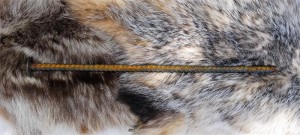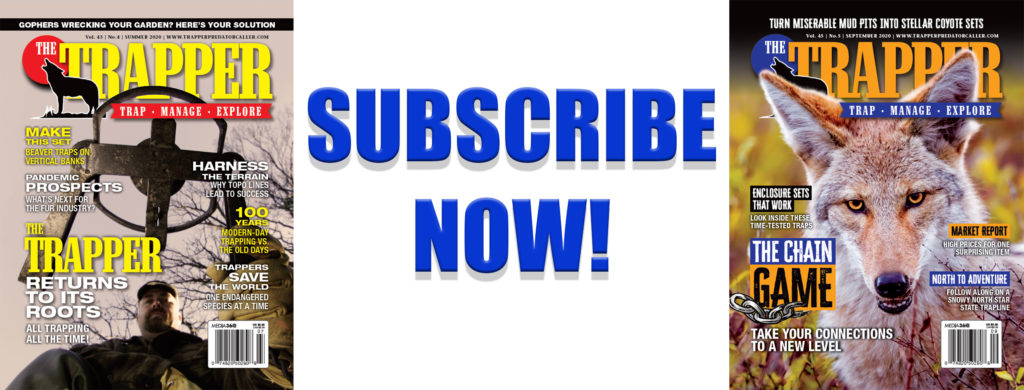This is a portion of Jim Spencer’s story “Holding What You Catch,” which appeared in the October 2014 Trapper & Predator Caller issue.
By Jim Spencer
Staking is by far the most common method of fastening traps. Staking is just what it sounds like — fastening the trap to a wooden or metal stake, then driving the stake into the ground at the set location. It sounds simple, but even here there are many choices.
In “good dirt” — basically, the sort of stuff you’d like to have in a garden plot — a stake made of hardwood or metal (usually ½-inch or 3/8-inch concrete reinforcement rod, called rebar by most trappers) is sufficient, provided it’s long enough to hold the largest animal that might be caught in the trap. For foxes, 15-inch stakes are usually sufficient. For larger, more powerful animals like coyotes, 30- to 36-inch stakes are safer.
Wood holds in the soil better, but wooden stakes really aren’t suitable for most traplines. Rebar is much better. It’s more durable than wood, of course, and has an additional advantage at dirt sets because the round metal shaft allows the trap to swivel around, keeping the trapped animal from tangling and kinking the chain.
In softer soils, especially when trapping powerful animals like coyotes, raccoons, bobcats and otters, cross staking — driving two stakes at a 90-degree angle — is a good solution. This greatly increases holding power, and two 36-inch cross stakes will provide a secure anchor for strong animals like coyotes and otters, even in sand.
In recent years, many brands of so-called disposable stakes have become popular. These are made of a length of snare-type cable attached to a metal anchor. The cable is attached to the trap with an S-hook or other fastener, and the disposable anchor is driven into the ground with a special driver, usually a smooth, pointed piece of rebar. When the trapper gives a firm tug on the cable, the anchor turns in the soil and holds securely.
As the name suggests, disposables are designed to be left in the ground after use. However, they can usually be easily retrieved by using a modified car jack or pry pole. Sometimes the anchor gets bent in the retrieval process, but it can be straightened and reused several times. Disposable stakes are useful in several situations, including rocky soils, water trapping and on-foot traplines, where carrying heavy rebar stakes is a problem.


